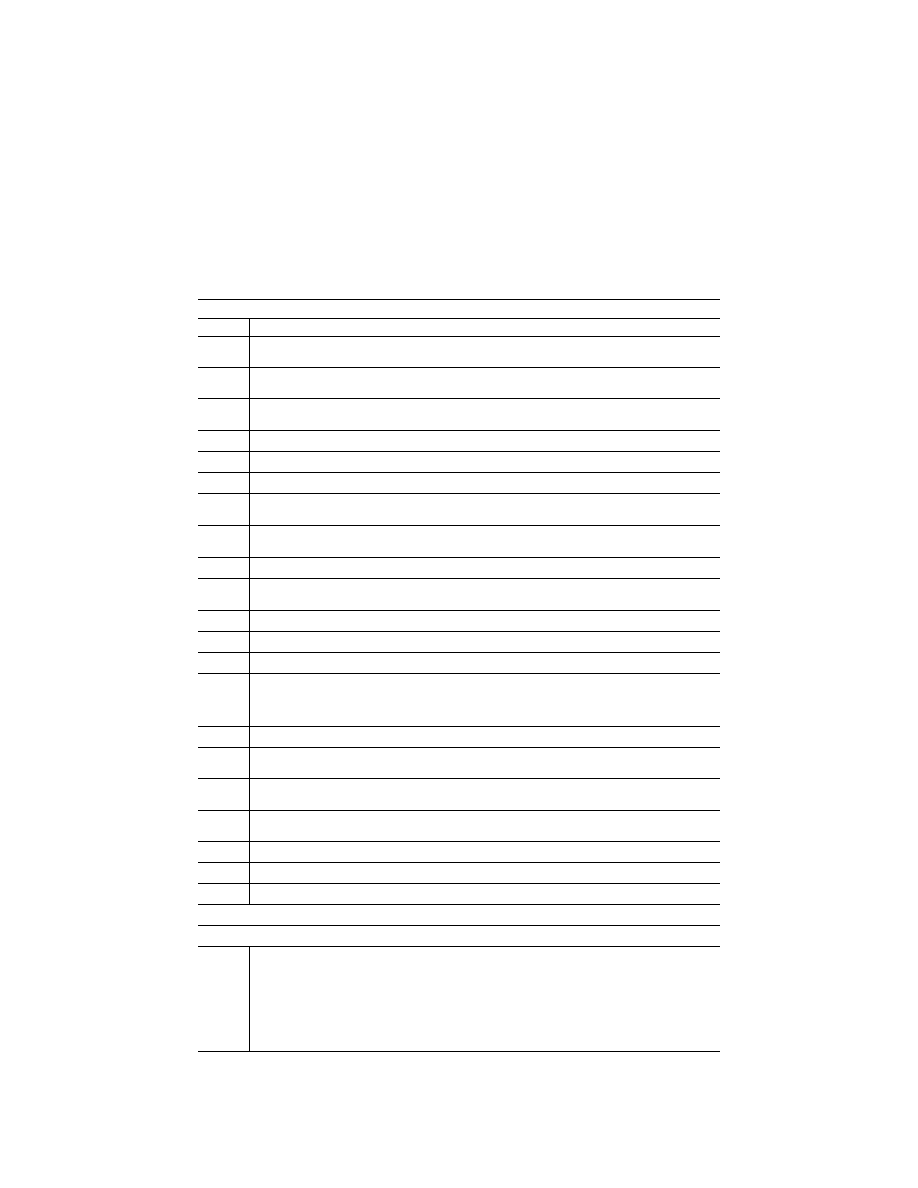
349
Federal Aviation Administration, DOT
Pt. 60, App. D
T
ABLE
D3B—T
ABLE OF
F
UNCTIONS AND
S
UBJECTIVE
T
ESTS
A
IRPORT OR
L
ANDING
A
REA
C
ONTENT
R
EQUIREMENTS FOR
Q
UALIFICATION AT
L
EVEL
7 FTD—Continued
QPS requirements
Entry No.
Operations tasks
4.f.1. .........
The airport or helicopter landing area model must be properly aligned with the navigational aids that are associated
with operations at the ‘‘in-use’’ runway or helicopter landing area.
4.f.2. .........
The simulation of runway or helicopter landing area contaminants must be correlated with the displayed runway
surface and lighting, if applicable.
5. ..............
Correlation with helicopter and associated equipment.
The following are the minimum correlation comparisons that must be made for a Level 7 FTD.
5.a. ...........
Visual system compatibility with aerodynamic programming.
5.b. ...........
Visual cues to assess sink rate and depth perception during landings.
5.c. ...........
Accurate portrayal of environment relating to FTD attitudes.
5.d. ...........
The visual scene must correlate with integrated helicopter systems, where installed (e.g., terrain, traffic and weath-
er avoidance systems and Head-up Guidance System (HGS)).
5.e. ...........
Representative visual effects for each visible, own-ship, helicopter external light(s)—taxi and landing light lobes (in-
cluding independent operation, if appropriate).
5.f. ............
The effect of rain removal devices.
6. ..............
Scene quality.
The following are the minimum scene quality tests that must be conducted for a Level 7 FTD.
6.a. ...........
System light points must be free from distracting jitter, smearing and streaking.
6.b. ...........
Demonstration of occulting through each channel of the system in an operational scene.
6.c. ...........
Six discrete light step controls (0–5).
7. ..............
Special weather representations, which include visibility and RVR, measured in terms of distance.
Visibility/RVR checked at 2,000 ft (600 m) above the airport or helicopter landing area and at two heights below
2,000 ft with at least 500 ft of separation between the measurements. The measurements must be taken within a
radius of 10 sm (16 km) from the airport or helicopter landing area.
7.a. ...........
Effects of fog on airport lighting such as halos and defocus.
7.b. ...........
Effect of own-ship lighting in reduced visibility, such as reflected glare, including landing lights, strobes, and bea-
cons.
8. ..............
Instructor control of the following:
The following are the minimum instructor controls that must be available in a Level 7 FTD.
8.a. ...........
Environmental effects: E.g., cloud base, cloud effects, cloud density, visibility in statute miles/kilometers and RVR
in feet/meters.
8.b. ...........
Airport or helicopter landing area selection.
8.c. ...........
Airport or helicopter landing area lighting, including variable intensity.
8.d. ...........
Dynamic effects including ground and flight traffic.
End QPS Requirement
Begin Information
9. ..............
An example of being able to combine two airport models to achieve two ‘‘in-use’’ runways: One runway designated
as the ‘‘in-use’’ runway in the first model of the airport, and the second runway designated as the ‘‘in-use’’ run-
way in the second model of the same airport. For example, the clearance is for the ILS approach to Runway 27,
Circle to Land on Runway 18 right. Two airport visual models might be used: The first with Runway 27 des-
ignated as the ‘‘in use’’ runway for the approach to runway 27, and the second with Runway 18 Right designated
as the ‘‘in use’’ runway. When the pilot breaks off the ILS approach to runway 27, the instructor may change to
the second airport visual model in which runway 18 Right is designated as the ‘‘in use’’ runway, and the pilot
would make a visual approach and landing. This process is acceptable to the FAA as long as the temporary
interruption due to the visual model change is not distracting to the pilot.
VerDate Mar<15>2010
20:48 Jan 30, 2014
Jkt 232047
PO 00000
Frm 00359
Fmt 8010
Sfmt 8002
Q:\14\14V2.TXT
ofr150
PsN: PC150